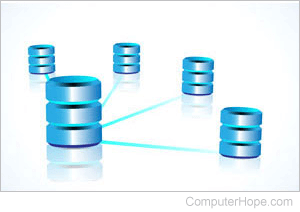Systems integration

When referencing IT (information technology), systems integration combines multiple software applications or computing components (sometimes both). The purpose is to create a unified, cohesive system with additional reach and functionality. More plainly, systems integration means connecting existing systems or creating new ones to improve efficiency, functionality, or overall performance.
Systems integration helps facilitate communication among an organization's various IT components. As a result, information can be exchanged quickly, and operating costs are ideally reduced. Another aim is to increase value to the consumer by providing improved service performance or product quality. System integration's scope can extend beyond solely internal connections to collaborate with third-party entities as well.
System integration examples
There are several methods used in systems integration; here are some of them:
- Vertical integration - This method involves organizing subsystems based on functionality by creating silos. While it's cost-effective initially because it only involves necessary vendors, it can lead to higher long-term ownership costs as adding new functionalities requires additional silos. It's also impossible to reuse subsystems.
- Horizontal integration - This method dedicates a subsystem to communicate with others, reducing the overall number of connections. It cuts integration costs, provides flexibility, and allows seamless replacement of subsystems.
- Star integration - This method, resembling a star from the integrated subsystem's perspective, connects each system to all remaining subsystems. It offers flexibility in functionality reuse but can become costly if subsystems export highly-mixed interfaces.
- Industrial life cycle integration - This method considers four stages: initial system implementation, engineering and design, project services, and operations. It aims to create a standardized data architecture that functions throughout the asset's life, rather than only short term.
